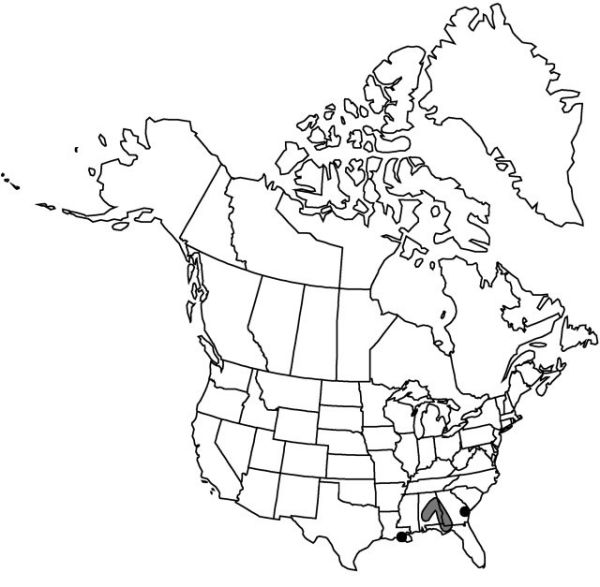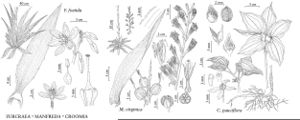Croomia pauciflora
in J. Torrey and A. Gray, Fl. N. Amer. 1: 663. 1840.
Rhizomes extensive, internodes 8–10 cm. Stems to 28 cm. Basal leaves 1–2, from rhizomes and proximal 5 cm of aerial stems, striate (from parallel veins). Cauline leaves distichous; petiole channeled, 3–4.5 cm; blade ovate, 7–8 cm, base cordate, margin scabrous, apex cuspidate-obtuse. Flowers: perianth ca. 1 cm wide; tepals caducous, greenish, often purple- tinged, ligulate to ovate; filaments thick; ovary ca. 1 × 1.5 mm; pedicel 8–11 mm, joint ca. 2/3 distance from base. Capsules globose, to 1 cm.
Phenology: Flowering spring.
Habitat: Rich, sandy or rocky loam of mesic, wooded slopes and bottoms, usually in nearly neutral soils
Elevation: 20–300 m
Distribution

Ala., Fla., Ga., La.
Discussion
The attribution to Louisiana (based on a single nineteenth-century collection) is doubtful (R. D. Thomas, pers. comm.). Apparently rare, Croomia pauciflora sometimes may be overlooked because of its superficial resemblance to juvenile forms of Smilax ecirrhata S. Watson and S. herbacea Linnaeus.
Selected References
None.
